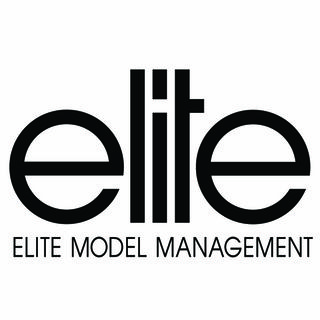It’s wise for models to know and use techniques to research whom they are corresponding with. On the Internet anyone can claim to be anything, and you shouldn’t simply assume that they are who and what they say they are. There are a wide variety of sources and techniques that models can use to confirm what a potential client says about himself.
Search Engines
The most obvious source of data is search engines. If Joe Schlabotinsky claims to be an important casting director in Los Angeles, do a search on him. If he is at all well known in the industry there is likely to be at least one reference to him. Search engines like google.com offer you chance to see what information is available.
Some simple tricks help. Use quotation marks around words that necessarily will be together (e.g. “Joe Schlabotinsky”) to reduce false hits on Joe and Schlabotinsky separately. Add the name he gives you for his company to the search term, or search for it separately. If it’s made up of common words and you get too many hits, add in qualifiers like “casting,” or “talent,” or “Los Angeles” or some other word that might appear in an article on him.
On Google and some other search engines you can also search on his email address or his telephone number (usually using the format XXX-XXX-XXX) or street address (in quotation marks) to see what pops up. If it happens that other businesses are located at the same address, is their nature consistent with what you would expect for Joe?
MapQuest/Google Maps
Ask for a full address for him or his studio. Even if you don’t have that, if you have any geographical information about him (zip code, even just city), put it into Mapquest (www.mapquest.com) or Google (maps.google.com) and look at the map. Just from the location you may be able to get important information. Is it a residential area or business? On Google you can also switch to a satellite picture of the neighborhood. Is it near a population concentration or off in the boonies somewhere? Few good New York City agencies are located in Long Beach, NY, for instance – even though it may be considered part of NYC.
If Mapquest says the address doesn’t exist, you know something else important.
Email Address
It’s not unheard of for a good photographer or agency to use AOL or a freebie email address like Yahoo or Hotmail – but it’s not a good sign if they do. Ask for a real, ISP-generated email address, and be suspicious if they won’t give you one.
If you do have a real email address, what can it tell you about the person?
The top level domain (the last bit after the dot, as .com, .edu, .gov) is important. If someone is using a “.edu” domain it suggests he may be a student posing as someone else. “.gov” is reserved for governmental organizations; “.mil” for the Department of Defense. Many domains are also outside the US. If it ends in only two letters (“.ru” for instance) it is hosted in another country.
You can find out which country here: http://ftp.ics.uci.edu/pub/websoft/wwwstat/country-codes.txt and then ask why he is using that email address.
The second level domain (the stuff before the dot. In webmaster@model.world, the second level domain is “model.world”. Turn it into a website URL (www.model.world), type it into your browser, and see what comes up. The answers can sometimes be revealing. Even if there is no associated website, does the domain seem to signify something? Is it something you ought to worry about? Or did it turn out to be a freebie email address site?
Location as part of the domain. Someone claiming to be a high-class New York photographer whose email is highclassnyphotog@charleston.rr.com had better explain why he isn’t from New York.
User name. That is his self-definition (although it may be assigned by someone else in an organization). If it’s “screwloose” perhaps he thinks of himself that way – and perhaps you should too. Or it may be a name (initials and last name, perhaps). Is it the same name he gave you? Why not?
IP Numbers
Spammers and scammers have become adept at spoofing email addresses, and a really determined scammer can set up a fake email to keep you from being able to trace him. But the Internet protocols that transfer messages around keep a record of how they do it and what the source was, so you may be able to find out more about him by looking at those numbers. The “header record” of the email will contain the Internet Protocol (IP) numbers associated with the source.
For users of Outlook, the Header can be seen by clicking View>Options at the top of the message page. In Outlook Express, click File>Properties and select the details tab. Other email clients normally let you access the header through the “Options” tab, although the specific route will vary. You can use the “Help” file to find how to do it. If you use a web-based mail system (like Hotmail) instead of a mail browser, you may not be able to get access to the header data.
When you have the header record it may look something like this:
Return-Path: <reallybignycphotog@yahoo.com>
Received: from web41824.mail.yahoo.com (web41824.mail.yahoo.com [66.218.94.158])
by mail.netmagic.net (8.13.1/8.13.1) with SMTP id iBVNoa3i024220
for <curiousmodel@newmodels.com>; Fri, 31 Dec 2007 15:50:36 -0800
Received: (qmail 17260 invoked by uid 60001); 31 Dec 2007 23:52:31 -0000
Message-ID: <20071231235231.17258.qmail@web41824.mail.yahoo.com>
Received: from [220.78.217.222] by web41824.mail.yahoo.com via HTTP; Fri, 31 Dec 2007 15:52:31 PST
Date: Fri, 31 Dec 2007 15:52:31 -0800 (PST)
From: Joe Schlabotinsky < reallybignycphotog@yahoo.com>
Subject: test message
To: curiousmodel@model.world
MIME-Version: 1.0
Content-Type: multipart/alternative; boundary=»0-1596984842-1104537151=:17171″
Status:
Well, that’s a bit much to wade through, but you can make sense out of it. In this case it says someone who claims to be Joe Schlabotinsky, who took out the email address reallybignycphotog@yahoo.com sent the message from Yahoo, but Yahoo got it from IP address 220.78.217.222 (see the italicized part), which, as it turns out, is Joe’s IP number at home. That can be traced, and in this case it traces to a town in Korea. Something is not right about Joe.
Whois
How do we know that Joe’s IP number is in Korea? We run a “whois” check on it. Websites like www.whois.com, www.whois.net, www.betterwhois.com and others let you type those IP numbers in and tell you what Internet Service Provider (ISP) owns them and where it is located. In this case we got a reference to an IP number listing service in the Pacific (www.apnic.net) which told us that the IP was in Korea.
An even better way to do these kinds of searches is to get a free tool that does them for you, and helps you understand what the results mean. An excellent one is Sam Spade, which is available as a free download at www.samspade.org/ssw/.
You can do a whois search on more than just IP numbers. If Joe has a website, you can type in the URL (without the www) and see who owns and administers it, and may be able to find companies it is associated with and other sites they own. All those things are useful in assessing what Joe is really about.
Published Reference Sources
There are many professional listings of agencies, photographers, casting directors and others in the modeling industry. The average Internet photographer won’t be in them, but if he claims to be more than just the average, it might be useful to check these books to see if he is in them. Some are expensive (Le Book and The Workbook), although they have much of their listings online as well: www.lebook.com and www.workbook.com. Listing in these high-status sources is a very good sign, although not being listed isn’t very significant, since many good professionals are not.
In addition there are the affordable books published by Peter Glenn Publishing, “Model and Talent” and “Fashion and Print”, which offer extensive lists of agencies, talent reps, personal managers, casting directors and other industry professionals. A good professional may well be in these books.
Forums
Earlier we talked about photography and modeling forums as sources of information. One of the things they can be used for is checking on a potential client. If you are a regular you can post a question about Joe. Has anybody worked with him? What was their experience? Ask readers to email you. Frequently that’s the best source of information about an Internet photographer. That technique should be used with care, however. If Joe is also a regular on that site, he may take offense to the question. Reference to modeling and photography related forums is contained in the “For Further Reading” section toward the end of this book.
Networking
Many Internet models report that the most useful source of information on clients is from other models who work in the area they do. A new model should seek some of them out (through forums or listing services), explain who she is and what she is doing, and see if they are willing to share information. Many models are very helpful, and the more experienced ones can offer very useful insights to new models.
Telephone Calls
Above we discussed books that could help you locate modeling industry professionals near you, or near where a potential client works. You can use those listings to find people to call and ask about the person or company. Have they heard of them? What do they do? Would they recommend them? This probably doesn’t make sense for the average Internet photographer, but for someone claiming to be an agent, casting director or other industry professional it does.







Comments 0